1. Introduction
Milk teeth, or primary teeth, are the foundation of a child’s oral health. Although they will eventually be replaced by permanent teeth, the health of milk teeth is crucial for a child’s overall development. Milk teeth not only aid in chewing and speech but also impact the child’s nutrition and psychological development. However, milk teeth are more prone to cavities (caries) due to their relatively softer enamel and susceptibility to external factors.
Milk teeth cavities can lead to pain, infection, and even affect the development of permanent teeth. Therefore, preventing cavities in milk teeth is of paramount importance. While cavities in milk teeth can be treated through fillings and other procedures, prevention is always the most effective and cost-efficient approach. This article will explore various daily preventive measures to help parents protect their child’s milk teeth from cavities.
2. Causes of Cavities in Milk Teeth
Understanding the causes of cavities in milk teeth is the first step in effective prevention. The main factors that contribute to cavities in milk teeth are:
2.1 Poor Dietary Habits
Dietary habits play a critical role in the development of cavities in milk teeth. Foods and drinks high in sugar or acid are the primary culprits. Sugar provides nourishment for bacteria in the mouth, which, in turn, produce acids that erode tooth enamel, leading to cavities. Fruit juices, sodas, candies, and cookies are common foods that contribute to milk tooth cavities.
2.2 Poor Oral Hygiene Habits
Good oral hygiene habits are essential for preventing cavities in milk teeth. Many children fail to brush their teeth regularly or do not brush thoroughly, which allows bacteria to accumulate on the teeth and form plaque. Plaque, if not removed, can harden into tartar, which can lead to cavities and other oral health problems.
2.3 Oral Environment Factors
Some children have a naturally moist oral environment or a higher rate of saliva production, which can make them more susceptible to cavities. Additionally, a lack of fluoride in the water or improper bottle-feeding habits can increase the risk of milk teeth decay. If a child frequently uses a bottle, the sugars in the milk or juice can remain in the mouth for extended periods, providing a breeding ground for bacteria.
2.4 Genetic Factors
Genetics can also play a role in a child’s oral health. Some children may inherit weaker tooth enamel or a higher susceptibility to tooth decay, which increases their risk of developing cavities. Genetic factors can make certain children more prone to cavities than others.

3. Preventive Measures for Cavities in Milk Teeth
Preventing cavities in milk teeth requires paying attention to the details of daily life. Below are effective preventive measures that parents should follow to ensure their child’s milk teeth stay healthy.
3.1 Cultivating Good Oral Hygiene Habits
The most fundamental and important step in preventing cavities in milk teeth is cultivating good oral hygiene habits. Regular and effective brushing can remove plaque from the teeth and reduce the risk of cavities.
3.1.1 Brushing Teeth Regularly
Parents should start teaching their child to brush their teeth as soon as the first milk tooth erupts. It is recommended to brush at least twice a day (morning and night), with each brushing session lasting at least two minutes. For children under the age of two, use a wet cloth or finger brush to clean their teeth. For children over the age of two, parents should help them use a child-sized toothbrush and fluoride toothpaste. Fluoride helps to prevent cavities by strengthening the enamel.
3.1.2 Proper Brushing Technique
Parents should teach their children the proper brushing technique. Children’s teeth are often irregular in shape, with hard-to-reach areas where food can get stuck. Parents should ensure their child uses the correct brushing method, such as the “vertical brushing method” or “circular brushing method.” The brush should be held gently to avoid damaging the gums.
3.1.3 Using Dental Floss
A toothbrush alone is not sufficient to clean between the teeth. Dental floss can be used to remove food particles and plaque from between the teeth, where a toothbrush might not reach. Parents can assist their children in using dental floss or teach them how to do so properly once they are old enough.
3.1.4 Regular Dental Checkups
Regular dental visits are essential for early detection of cavities and other oral health issues. A dentist can monitor the health of the child’s teeth and provide professional cleanings and fluoride treatments. Regular checkups help catch any developing cavities early and prevent further complications.
3.2 Controlling Sugar Intake in Children’s Diets
Sugar is a major contributor to the development of cavities in milk teeth. Bacteria in the mouth feed on sugar and produce acids that erode tooth enamel, leading to decay. Therefore, controlling sugar intake is a key strategy in preventing cavities in milk teeth.
3.2.1 Reducing Sugary Snacks and Beverages
Parents should limit their child’s consumption of sugary snacks, candies, sodas, and fruit juices. These foods and drinks provide the sugar that bacteria need to produce acids. It is especially important to avoid sugary snacks and drinks before bedtime, as sugar can remain in the mouth overnight, increasing the risk of cavities.
3.2.2 Encouraging a Balanced Diet
Parents should encourage a balanced diet that includes foods rich in calcium, vitamin D, and phosphorus. These nutrients help to strengthen tooth enamel and make teeth more resistant to decay. Fresh fruits, vegetables, and high-fiber foods also promote salivation, which helps to naturally clean the teeth and neutralize acids in the mouth.
3.2.3 Using Fluoridated Water or Fluoride Toothpaste
Fluoride strengthens tooth enamel and helps prevent cavities. Parents should ensure their child drinks fluoridated water and uses fluoride toothpaste. Fluoride helps protect teeth against decay and improves overall oral health.
3.3 Improving Feeding Habits
One of the significant causes of cavities in young children is the use of a bottle, especially when children use bottles to sleep. Milk, juice, and other sugary liquids can remain in the mouth for long periods, promoting bacterial growth and cavity formation. Parents should focus on adjusting feeding habits to reduce the risk of cavities.
3.3.1 Avoiding Sugary Liquids Before Bedtime
Parents should avoid giving their child sugary liquids such as milk, juice, or formula before bed. Whether it’s breast milk or formula, the sugar in these liquids can stay in the mouth overnight and contribute to tooth decay. It is essential to brush the child’s teeth after feeding to remove any remaining sugars and prevent cavities.
3.3.2 Gradually Transitioning to Regular Foods
When children start solid foods, parents should gradually transition them away from bottle-feeding to regular foods and drinks. This helps develop good eating habits and reduces the prolonged exposure of teeth to sugary liquids.
3.4 Encouraging the Use of Dental Sealants
Dental sealants are an effective preventive measure, especially for children’s milk teeth and the emerging permanent molars. Sealants are protective coatings that fill the grooves and fissures of the teeth, preventing food particles and bacteria from accumulating in these areas, which are difficult to clean with regular brushing.
3.4.1 Appropriate Age for Sealants
It is recommended to apply dental sealants to children’s teeth around the age of six or when their first molars begin to erupt. Sealants are particularly helpful for the back teeth, which have complex grooves and are more prone to food retention and cavities. Parents should consult with a dentist to determine if their child is a candidate for sealants.
3.5 Early Detection and Treatment of Cavities
Although prevention is crucial, early detection of cavities can significantly reduce the risk of further damage. Parents should be vigilant about any signs of tooth decay in their children and seek dental treatment as soon as possible. Prompt treatment helps prevent cavities from spreading and reduces the need for more extensive procedures.
3.5.1 Monitoring for Signs of Cavities
Parents should regularly check their child’s teeth for any visible signs of cavities, such as dark spots, white patches, or holes in the teeth. If these signs are noticed, a visit to the dentist should be scheduled immediately. Early intervention can prevent the development of more severe cavities and preserve the health of the milk teeth.
4. Conclusion
Preventing cavities in children’s milk teeth is a critical part of their overall health and well-being. By adopting good oral hygiene habits, controlling sugar intake, and encouraging regular dental visits, parents can significantly reduce the risk of milk teeth cavities. Additionally, early detection and appropriate treatments, such as dental sealants, can further protect children’s teeth from decay.
While milk teeth are temporary, their health directly affects a child’s ability to chew, speak, and grow properly. Therefore, by making a concerted effort to follow these preventive measures, parents can ensure their child maintains a healthy smile and lays the foundation for good oral health throughout life.


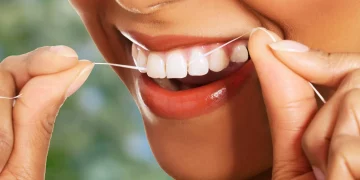



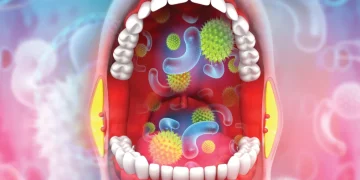
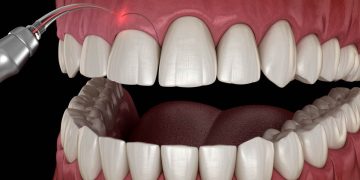
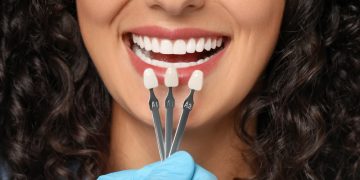
















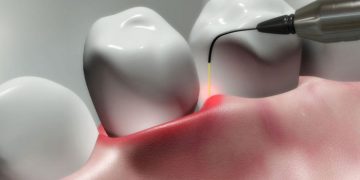



















Discussion about this post